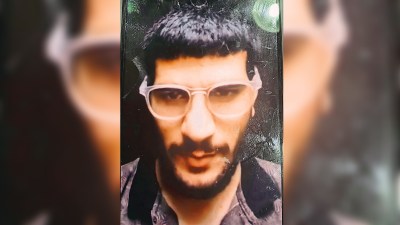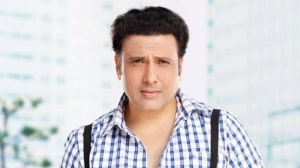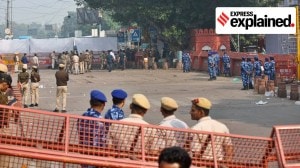Unreformed on the tarmac
After wondering for an entire week why poor Yashwant Sinha got such badpress on his budget, I found the answer last week, in the middle of...

After wondering for an entire week why poor Yashwant Sinha got such badpress on his budget, I found the answer last week, in the middle of thenight, on board Air India 443, which arrived from Singapore on the dot at1.20 am. Now it stood waiting, its doors open to let in fresh air, Kandaharstyle.
It was waiting, for half an hour, for the stepladder which had obviously notbeen positioned anywhere close to the parking bay. Weary passengers and crewpaced up and down, and celebrated as the stepladder arrived, mounted on acreaky, 1960s vintage Tata truck. But the driver wouldn’t couple the ladder.His reason was pretty sound. Nobody had remembered to put the chocks toblock the wheels of the parked aircraft. The driver wouldn’t risk couplingthe ladder with an aircraft with unsecured wheels. So another scramblestarted, this time for the chocks as none had been positioned close to theplane’s parking bay….
It is a long story of a painful night with a bit of Kafka, a bit of Greektragedy, a bit of magic realism even. And I intend to tell it fully and alsoexplain why I think its lesson is that Yashwant Sinha, and other committedreformers like him, get it all so wrong simply because they fail to convinceconsumers like you and me, the types trapped in AI 443 and another publicsector monstrosity that passes for an international airport in Mumbai, whyreform will change our lives for the better. We are told, instead, thatreform and privatisation will produce a few thousand crores with which thegovernment could pay its debts. Who cares? You wouldn’t, if after havingsweated, waiting for the stepladder, you now had to wage a lonely, hopelessbattle for a baggage cart.
This was particularly rough on the woman in black sweatshirt and jeans,travelling by herself and now on the verge of tears. "I will not, I willnot, no matter what happens, push and shove for a baggage cart," she pleadedbefore bemused airport officials. "Then how else do you expect to find one?"she was asked.
"But nowhere in the world do you have to fight for a baggage trolley. That’sthe minimum a passenger needs on landing. And there isn’t even a glass ofwater to drink here," she was now screaming.
She only got some sympathetic glances, a chivalrous offer by somebody to dothe pushing and shoving on her behalf instead, a few official sniggers andfinally an excited tip-off. There, run, they are wheeling in seven morecarts. You have a real chance…
But what help would it be to even find a cart if now, more than an hourafter the flight had landed, there is no sign of baggage on the belt. Boredpassengers squat on it, since there is no other place to sit. Even the dutyfree shop is inaccessible — uniquely — before the immigration area, so thereis no place to even kill time.
Then, a friendly, but utterly helpless Air India official explained thereason why baggage takes so long to arrive at Sahar. The new terminal isdesigned so poorly that pillars block the way of the baggage tractors. Soonly one can get in at a time and if two or three flights arrive close toeach other, which is the case every night in Mumbai, your baggage could sitfor a long time on a tractor in this queue. "Don’t blame us," said the AirIndia staffer, "please go ask the Airports Authority if they’ve beenemploying college dropouts as architects and designers."
By this time we were in pretty good company as even the crew of our flightwaited along with the passengers for the baggage and finally, at 2.55 am,exactly an hour and 35 minutes after the aircraft doors had opened, theconveyor belt screeched and rattled-musically to our ears. But the baggagethat came out first didn’t belong to any of the passengers, not even thebusiness class types. All you saw were several odd-shaped plastic andtarpaulin bags which were quietly carried away by uniformed porters, themost efficient people on duty. These, another cynical official explained,were consignments for courier companies. "They are networked rather wellhere, you know, so their consignment sometimes gets priority over firstclass baggage," we were told. Our bags did arrive, some time later. But, thestory of the night is not over yet.
"What exactly are you carrying in your bags?" asked the hound from customsas several of us walked through the green channel.
"Personal effects," I said.
"What else are you carrying?" he persisted.
"Well, if I am walking through the green channel, it means I am stating thatI am carrying nothing dutiable. So if you still have doubts, please check mybags," I suggested.
"Oh, just put them on the x-ray machine," he said. The bags, in his book,also included my solitary lounge suit that I was carrying on my shoulder, ina transparent, plastic garment cover. But I swallowed my pride and waited atthe other end. The woman at the monitor was too bored to even look at whatwas passing through the scanner. But she wouldn’t suffer fools like me soeasily.
"See what you have done? Your baggage has blocked our machine," she pouredcontempt as I extricated my suit from the x-ray belt.
"How is it my fault?" I asked.
"See how stupidly you put your baggage there. How can we work withpassengers like you?"
One more kick in the pants and I escaped from the great publicsector/Government of India trap that is supposedly our biggest internationalairport, the real Gateway to India. Behind me, others were being insultedeven more brutally. No wonder, just a while back, the woman in the blacksweatshirt was telling her family on the mobile phone: "I am fine, even ifthere is no baggage cart. But let me tell you, if you wish to feel like arespectable, dignified Indian, please go to China. Here you can’t even feelhuman."
What is there in this story for Yashwant Sinha who is now being pilloriedfor presenting a budget so dreary that it wiped nearly Rs 70,000 crore fromthe BSE market cap and so status quoist despite his promise of reducing thegovernment’s holdings to a minority in key PSUs? The central lesson is thatpeople like us, who survive the AI 443 kind of ordeal in various aspects ofour lives in all parts of the country all the time, in the hands of a systemwhere crucial services are run by the pampered, almighty PSUs, need to betold why privatisation and disinvestment are good for us.
How do we care if it would help Sinha pay off some of his debts? But if itmeans we will have cleaner, less corrupt airports, better airlines, moreefficient banks, safer railways and, generally, more competition and choicein our marketplace, we will all be on his side. The reason he, and otherreformers, are shy of saying so is that if there is one thing governmentsare scared of, it is their own employees. But this notion is stale, stupidand suicidal. Even the staff of the PSUs that have been exposed tocompetition have changed for the better, and dramatically so. State Bank ofIndia, Unit Trust of India and Indian Airlines are prime examples of this.So if he wants to be remembered as a genuine, radical reformer rather than amere tinker of conventional wisdom, Sinha has to learn this crucial lesson.This is the bullet he needs to bite.
Postscript. I did not have to push and shove, as an Air Indiaemployee marked me out as one of her airline’s privileged flyers bypresenting me with a baggage cart.






- 01
- 02
- 03
- 04
- 05

























